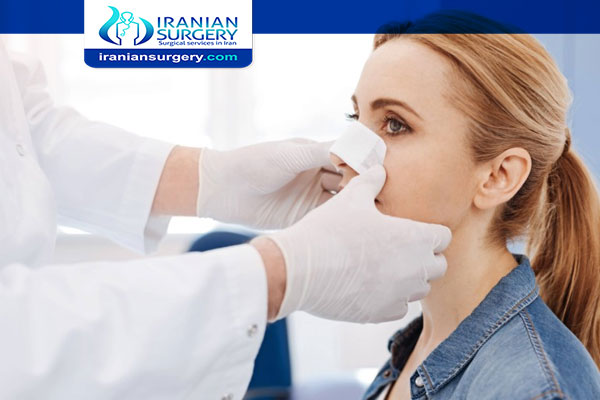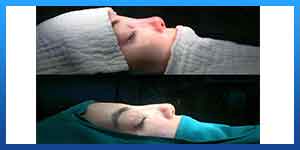How to clean nose after rhinoplasty?

How to clean inside your nose after rhinoplasty surgery?
How to clean nose after rhinoplasty surgery?
How often should I clean my nose after rhinoplasty?
when can i wash my nose after rhinoplasty?
how to get boogers out of nose after rhinoplasty?
In most cases, the body is naturally capable of healing and shedding debris without any external assistance. However, the healing process can be expedited with gentle intervention. Following your rhinoplasty surgery, you be will provided with specific cleaning instructions to help guide you so that you are able to clean your nose without causing any disruption to the healing tissue.

Read more about : Rhinoplasty podcast with Dr Afshan shah
Read more about : Rhinoplasty surgery before and after
Read more about : Revision Rhinoplasty podcast with Dr Afshan shah
Read more about : Rhinoplasty surgery , Before and after surgery Videos
Read more about : Crying after rhinoplasty
Read more about : When can i touch my nose after rhinoplasty?
Read more about : How long should i tape my nose after rhinoplasty?
Read more about : Blackheads after rhinoplasty
Read more about : Why do my teeth hurt after rhinoplasty?
Read more about : Can you die from a nose job?
Read more about : Rhinoplasty in Iran
Read more about : Revision Rhinoplasty in Iran
4 Ways to clean your Nose after Rhinoplasty
1. Q-tip and hydrogen peroxide
Hydrogen peroxide is sold under a variety of names including:
. Dihydrogen dioxide
. Hydrogen dioxide
. Hydrogen oxide
. Oxydol
. Peroxide
It is commonly sold in drug stores at concentrations of 3%, more or less. When cleaning at home, some doctors will recommend that you dilute it even further by half, using clean water. The q-tips, which should also be clean, can be inserted inside the nostril to remove dried blood and mucous. Do not insert the q-tip if there’s packing already in your nose as you don’t want to change the shape of your nose by forcing the absorbent material up your nostrils further.
2. Saline rinse
Nasal irrigation can be used starting one week after the surgery, and some doctors will encourage the use of saline rinses to keep the area hygienic.
A saline rinse uses a clean bulb that can be squeezed, which sends a low-pressure stream of water through one nostril while the water exits through the other. The saline rinse imitates the salinity of your bodily fluids (blood, sweat, tears, etc.), which is around 0.9% and can be obtained by boiling half a teaspoon of salt in a cup of water. Once cooled, it can be stored for later use.
3. Removing blockages
Sometimes your nose may be clogged by hardened blood and mucous so that it partially or completely seals the airway. While this congestion makes breathing more laboured and may even force you to breathe through your mouth, you should hesitate to blow your nose or insert a finger to help with the plug’s removal. Instead, focus on using a saline spray or saline drops to keep the lining moist. Use a clean finger to apply petroleum jelly on the suture line to help with healing.
4. Use a moist towelette
To clean hardened crust from around your nose, gently pat the area with a moist napkin to soften the dried fluid. Warm water can be used as it’s more comfortable than cold water.
Within four to six weeks of the surgery, most of the swelling will be gone. At this point, you can resume washing your face regularly.
Read more about : Sex after rhinoplasty
Read more about : How to reduce swelling after rhinoplasty?
Read more about : Touching nose after rhinoplasty
Read more about : What to avoid before rhinoplasty?
Read more about : What to eat after rhinoplasty?
Read more about : When can i get a facial after rhinoplasty?
Read more about : How to get a nose job without anyone knowing?
Read more about : Bulbous nose rhinoplasty
Read more about : Rhinoplasty healing stages
Read more about : Fever after tummy tuck
Read more about : Can you get botox after rhinoplasty?
Read more about : Septoplasty surgery
Read more about : when can i wear makeup after rhinoplasty?
Read more about : How long after rhinoplasty can i fly?
Read more about : What is the best age to get a nose job?
Read more about : When can i exercise after rhinoplasty?
Read more about : How to get rid of scar tissue after rhinoplasty?
Read more about : Revision rhinoplasty success rate
- Rhinoplasty in Iran
- Rhinoplasty in Iran cost
- Revision Rhinoplasty in Iran
- Closed Rhinoplasty in Iran
- Open Rhinoplasty in Iran
- Before Rhinoplasty in Iran
- During Rhinoplasty in Iran
- After Rhinoplasty in Iran
- The common methods used in rhinoplasty in Iran
- Flying after Rhinoplasty in Iran
- Risks of Rhinoplasty in Iran
- Steps of Rhinoplasty in Iran
- Cleaning outside of nose after Rhinoplasty in Iran
- Best age for Rhinoplasty surgery
- Rhinoplasty Recovery
- Features of a good Rhinoplasty surgery in Iran
- Infective complications related to Rhinoplasty surgery
- Plastic surgery in Iran
- Rhinoplasty
- Face lift
- Facial plastic surgery
- Lip augmentation
- Ear pinning
- Blepharoplasty
- Neck lift surgery
- Chin lift surgery
- Liposuction
- Abdominoplasty (tummy tuck)
- Body sculpting
- Arm Lift
- Brazilian Butt Lift
- Breast Augmentation
- Breast Lift
- Breast implant
- male breast reduction ( gynecomastia )
- sex reassignment surgery ( sex change )
- Vaginoplasty
- labiaplasty
- Hair transplant for male
- Female hair transplant
- Reconstructive surgery
- Septoplasty
- Breast reconstruction
- Breast reduction
- Cleft lip and palate repair



